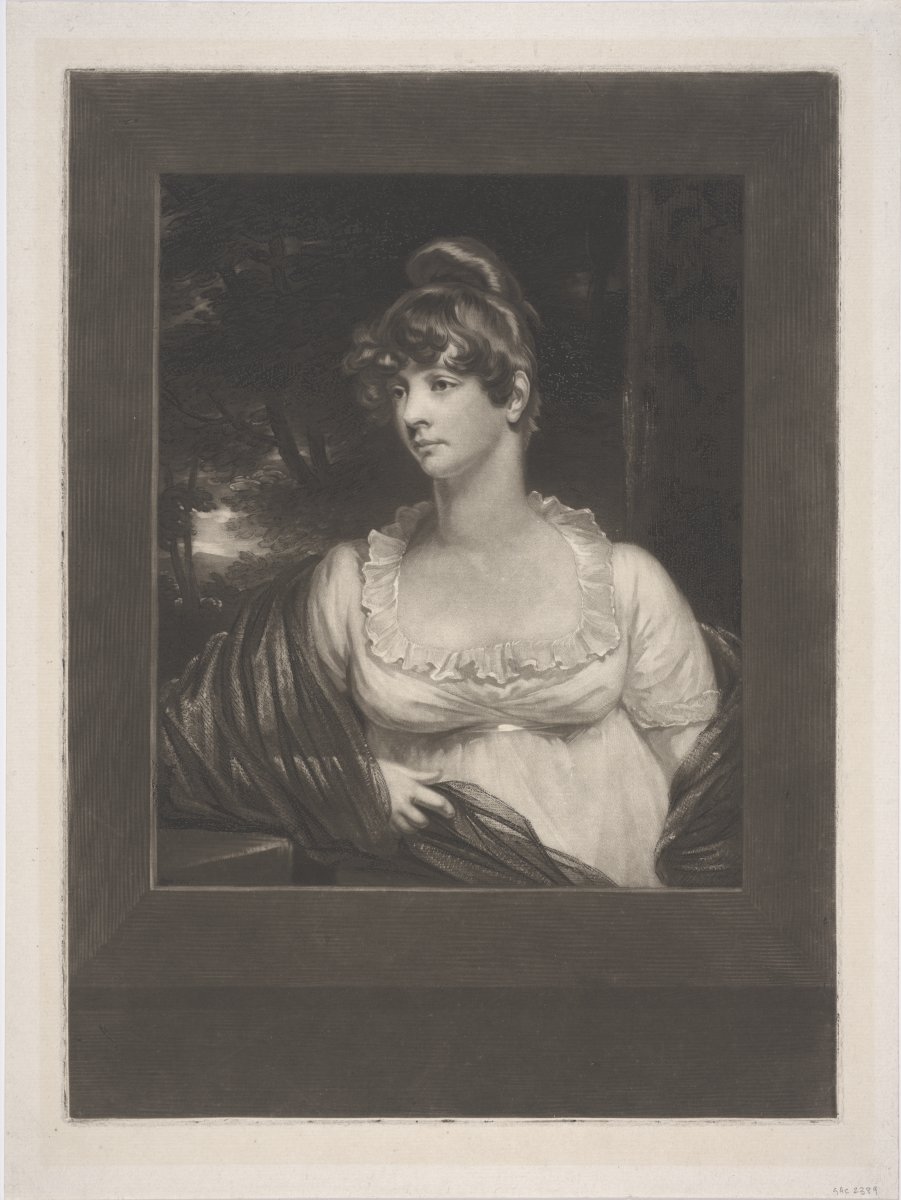Lady Sligo (1767-1817)

-
About the work
- Location
-
Country: UK
City: London
Place: Government Art Collection
-
About the artist
John Opie was born at St Agnes, Cornwall; the son of a mine carpenter. At c.15 his talent was recognised by Dr. John Wolcot, a physician, amateur artist and critic, who went into partnership with Opie, promoting his career. After Opie first exhibited at the Society of the Artists in 1780, the two arrived in London, Wolcot promoting Opie as the ‘noble savage’. George III purchased two paintings and by 1783 Opie had secured substantial patronage. His subjects included portraits, fancy pictures and history paintings. He became a member of the Royal Academy in 1787 and Professor of Painting at the Academy in 1805. Despite a passion for history and fancy pictures, he mainly exhibited portraits. His death at 45 is partly attributed to overwork.
Samuel William Reynolds was a painter and engraver. Despite publishing his first prints in the mid-1790s, he found himself in debt by 1800 and came to rely upon the financial help of Samuel Whitbread MP. It was under Whitbread’s patronage that Reynolds was able to broaden his interests to include painting, architecture and landscape design. He exhibited paintings at the Royal Academy and British Institution and was also a collector; owning a group of drawings by Thomas Girtin. In 1809 he visited France for the first time and he went on to exhibit engravings at the Paris Salon in 1810 and 1812. Reynolds also worked in Paris on occasion, where he found a market for his paintings of landscapes and cottage scenes.
-
Explore
- People
- Louisa Catherine (née Howe), Countess of Altamont and Marchioness of Sligo Browne (1767 - 1817)
- Places
- Subjects
- female portrait, landscape C18th, 18th century costume, dress
- Materials & Techniques
- mezzotint
-
Details
- Title
- Lady Sligo (1767-1817)
- Date
- 1802
- Medium
- Mezzotint
- Dimensions
- height: 40.50 cm, width: 30.50 cm
- Acquisition
- Purchased from Agnew's, February 1954
- GAC number
- 2389